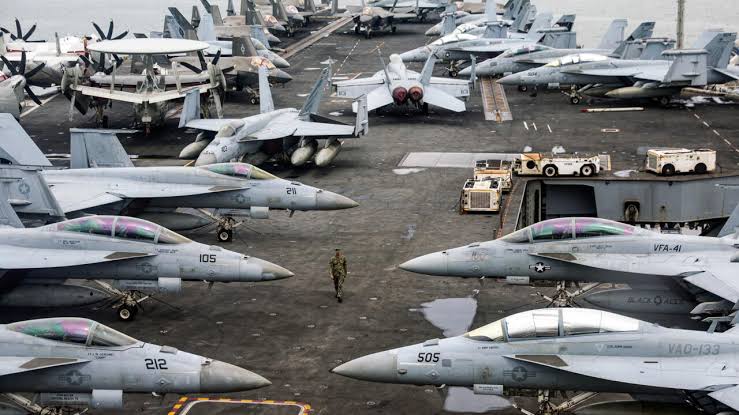The United States may still possess the most powerful navy in the world, but it appears to have recognized that this alone is insufficient to reclaim full dominance over the seas. Following statements by former President Donald Trump on shipbuilding, the Panama Canal, and Greenland, it is clear he intends to expand the US’s sea power, much like China is already doing.
China’s growing influence over global maritime trade and military activity challenges Washington’s ability to safeguard its interests. While the US remains militarily dominant, it is facing weaknesses in areas like merchant shipping and shipbuilding, according to analysts.
Last week, Trump told Congress that his administration would “revitalize” the nation’s shipbuilding sector, both military and commercial. He also criticized China for “controlling” the Panama Canal and hinted at using military force to take control of this strategic asset. Furthermore, he has expressed interest in acquiring Greenland, a Danish territory rich in minerals and oil reserves, and he has proposed taxing any Chinese vessels that dock in US ports.
Sophie Quintin, a researcher at Portsmouth University, remarked that Trump’s actions reflect a return to “navalism,” a 19th-century theory emphasizing sea power, originally promoted by US naval officer Alfred Mahan. On the other hand, Alessio Patalano, a maritime strategy expert at King’s College London, suggested that Trump may simply be appealing to his populist voter base, the MAGA movement. Regardless of the reasoning, Patalano noted, policies like revitalizing naval shipyards or taxing Chinese ships amount to a “navalist” strategy.
China’s Growing Sea Power
Nick Childs from the International Institute for Strategic Studies (IISS) highlighted China’s significant investments in global maritime sectors beyond just its navy. These include ports, infrastructure, and even the strategic use of its fishing fleet.
The US is particularly concerned about Chinese shipping firms, viewing them as extensions of the Chinese government’s influence. The Jamestown Foundation, a US think tank, warned that China’s control of key global ports—many linked to the Maritime Silk Road initiative—poses a significant threat to US interests. It pointed out Chinese state-owned firms like COSCO and China Merchant Ports, as well as the potential influence of Hutchison Port Holdings, which controls two Panama Canal ports.
However, Paul Tourret of France’s Higher Institute of Maritime Economics cautioned against oversimplifying China’s maritime agenda. He argued that firms like COSCO follow a financial strategy, merely facilitating the transportation of goods consumed in the US.
Despite Washington’s pressure, China seems to be responding. Hutchison announced last week that it had agreed to sell its profitable Panama Canal ports to a US-led consortium, though it insisted the decision was purely commercial.
Gaps in US Maritime Presence
While the US navy is unrivaled in power, its merchant fleet is in decline. Quintin noted that US shipping companies have significantly shrunk, and the remaining commercial fleet is aging. This has implications for the military, especially for civilian ships used in defense logistics.
Tourret emphasized that the US is struggling to build ships quickly, facing challenges due to a lack of the expertise of the Japanese and Koreans and the mass production capacity of China. Patalano also pointed out that the US is often years behind Europe in military shipbuilding programs.
Trump’s interest in Greenland and Canada can also be interpreted as part of an effort to assert US dominance over the seas. The Arctic, with its rapidly melting ice due to climate change, is becoming a new battleground for commercial and military activity, particularly for oil and mineral exploration. China, Russia, and the US are all eyeing the region, which is seen as crucial for power projection, especially for missile-launching submarines.
However, here too, the US is falling behind, with China currently deploying three icebreakers, while the US Coast Guard struggles to maintain its two aging vessels.
In the end, the US faces a race to secure maritime dominance in the face of growing competition, especially from China.

